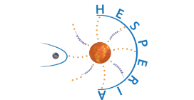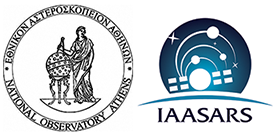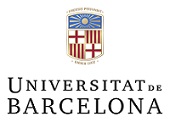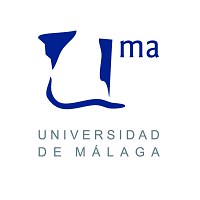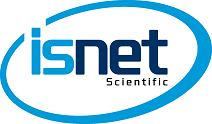About the venue
Alma Mater Chiloniensis, Kiel's university, was founded with a ceremony at Nikolaikirche (Church of St Nicholas) on Monday, 5 October 1665. Soon after, the university took on the name of its founder and has since been known as Christian-Albrechts-Universität zu Kiel (CAU). The number of students at the university is approximately 24 000, and the range of subjects offered cover economics, the natural sciences, agriculture, engineering, and science of education. In the former workplace of Max Planck and Heinrich Hertz, a teaching staff of 600 passes on their knowledge to students from Germany and more than a hundred other countries. The lectures will take place at the physics department.
Kiel
Kiel is the state capital of Schleswig-Holstein, the northernmost state of Germany, between Denmark and Hamburg. Schleswig-Holstein is the land between the seas, it is located between the North Sea and the Baltic Sea. Kiel is at the east end of the Kiel Canal, the world's busiest artificial waterway, which connects the Baltic Sea with the North Sea. As a major harbor, Kiel is the home of the Gorch Fock, a tall ship of the German Navy.
Kiel is also the home of the largest sailing event in the world, the Kieler Woche which takes place every year at the end of June.
Besides sailing (Olympic Games 1936 and 1972), Kiel is also famous for Handball (German record Champion THW Kiel), soccer (German Champion 1912 Holstein Kiel), football (German Champion 2010), smoked fish (Kieler Sprotten) and the uniform of D. Duck (Kieler Anzug).
Application must be addressed at This email address is being protected from spambots. You need JavaScript enabled to view it.
(Further Information at wiki.hesperia-space.eu )

Understanding Solar Eruptions and Extreme Space Weather Events – The physics behind
HESPERIA Summer school
August 29, 2016 to September 2, 2016
Christian-Albrechts-Universität, Kiel, Germany
Abstract
The Sun is both a source of all life and significant hazards. Solar energetic particle (SEP) events provoke extreme space weather. While not noticeable by humans on Earth, space weather caused radiation is a hazard for satellites, for the astronauts onboard the International Space Station (ISS), and in extreme cases for the aircrew on polar flights. But energetic particles are also of general astrophysical interest. Supernova remnants, pulsars, active galactic nuclei can only be seen because these objects accelerate particles. So does the Sun. Solar particles can not only be observed through their electromagnetic emission, but they can also be directly measured in space as SEP events and in extreme cases as ground level enhancements. We see their time evolution and can use it to constrain the acceleration processes. Therefore, scientists observe SEP events and incorporate methods to know or even forecast the radiation hazard associated with them.
Educational Objectives
The HESPERIA course at the Christian-Albrechts-Universität provides an introduction to the physics of the active corona, the variable solar wind including the interplanetary field embedded in, the acceleration and transport of energetic particles as well as their transport through the Earth magneto- and atmosphere and radiation effects. The lectures include a variety of interesting phenomena observed on the Sun and in interplanetary space.
Program
Students will attend a variety of lectures on space physics and research topics related to space weather and will gain valuable hands-on experience under the mentorship of a HESPERIA scientist. This program also provides students with opportunities to develop their written communication skills, by presenting their research in a formal report at the end of the summer school.
Application
The school is open to 25 graduate students currently enrolled in astro or space physics, planetary sciences, space engineering or a related field. Program acceptance is based primarily on the student’s academic record and nomination letter. Acceptance will also be based on the student's interest in attending the summer school and the benefit to the student of attendance, as demonstrated in the cover letter. Application must be addressed at This email address is being protected from spambots. You need JavaScript enabled to view it. . Further information at wiki.hesperia-space.eu.
Important Dates and Deadlines
1. 31.01.2016: Start of applications
2. 30.04.2016: Deadline for application
3. 30.04.2016: Deadline for support
4. 15.05.2016: Support application assignment and rating
5. 29.08.2016: Summer school starts
6. 02.09.2016; Summer school ends
Support
We will provide free accommodation in a students guest house and daily allowance to cover local expenses. Traveling support can be arranged for a few cases.
Please include the following material with your application:
1. Cover letter describing your research interests, why it would benefit you to attend
2. Current CV including full list of publications and presentations
3. Undergraduate transcripts
4. Nomination letter from your advisor
Lecturer
• Dr. Olga Malandraki (NOA): Introduction to the HESPERIA Project
• Prof. Rami Vainio (University of Turku): Particle acceleration
• Dr. Neus Agueda (University of Barcelona): Particle transport in the interplanetary medium
• Dr. Ludwig Klein (Observatoire de Paris): The solar corona and non thermal radiation
• Dr. Rolf Bütikofer (University of Bern): Particle transport in the Earth' magneto- and atmosphere
• Prof. Bernd Heber (Christian-Albrechts-University Kiel): In-situ measurements of solar energetic particles

HESPERIA workshop Paris, Feb 27 – Mar 2, Paris Observatory Schedule
.
Monday February 27
16:15 Coffee break SEP Forecasting (1)
|
Tuesday February 28SEP Forecasting (2)09:00 M. Nunez: Predicting the occurrence of GLE events09:30 J. Labrenz: Near realtime forecasting of MeV protons on the basis of sub relativistic electrons 10:00 R. Bütikofer: GLE Inversion Software – Assessment of Source and Transport Parameters Based on Neutron Monitor Data 10:30 A. Papaioannou: HESPERIA data retrieval tool demonstration 10:45 Coffee break 11:30 K.-L. Klein: Microwave observations for forecasting energetic particles from the Sun 12:00 M. Dierckxens: SEP Scoreboard: Real-time Forecasting Validation 12:30 General discussion: SEP forecasting, HESPERIA, perspectives 13:00 Lunch High-energy particles at the Sun: EM emissions14:30 G. Share: Characteristics of 29 Sustained-Emission >100 MeV Gamma-Ray Events Associated with Impulsive Solar Flares15:00 P. Zucca: A search for radio and X-ray counterparts of long-lasting solar gamma-ray emission from relativistic protons 15:30 A. Mackinnon: Secondary Electrons from Energetic Flare Ions 16:00 Coffee break 17:00 Guided tour of Paris Observatory |
Wednesday March 1High-energy particles from the Sun: SEPs09:00 E. Valtonen: Energy Spectra and Abundance Ratios of Heavy Ions in HESPERIA Gamma-Ray Events09:30 K. Tziotziou: Multi-spacecraft solar energetic particle analysis of FERMI gamma-ray flare events 10:00 P. Kühl: Solar Energetic Particle Events with Protons > 500 MeV between 1995 and 2015 Measured with SOHO/EPHIN 10:30 Coffee break 11:00 A. Afanasiev: Testing the shock origin of protons responsible for solar long-duration gamma-ray events 11:30 A. Aran: Modelling The 2012 January 23 And 2012 May 17 SEP Event With The Shock-And-Particle Model 12:00 A. Rouillard: CME and shock tracking during FERMI/LAT gamma-ray events (title TBC) 12:30 General discussion: High-energy particles at and from the Sun 13:00 Lunch 14:30 J. Kartavykh: Modeling of Energetic Particle Transport and Acceleration at Interplanetary Shock Waves in Mixed Solar Particle Events 15:00 S. Dalla: Solar Electron Deceleration in Interplanetary Space 15:30 W. Dröge: Multi-spacecraft observations and transport modeling of solar energetic particles in the inner Heliosphere 16:00 Coffee break 16:30 D. Strauss: Simulating Solar Energetic Particle Transport 17:00 D. Pacheco: Interplanetary Transport of Solar Electron Events Detected over a Narrow Range of Heliolongitudes 17:30 General discussion: Particle transport modelling 18:00 Adjourn |
Thursday March 209:00 N. Dresing: Long-lasting solar energetic electron injection during the 26 Dec 2013 widespread SEP event |
Abstracts can be downloaded from here.
Workshop program can be downloaded in printable format here.

 hesperia [dot] info [at] hesperia-space [dot] eu
hesperia [dot] info [at] hesperia-space [dot] eu